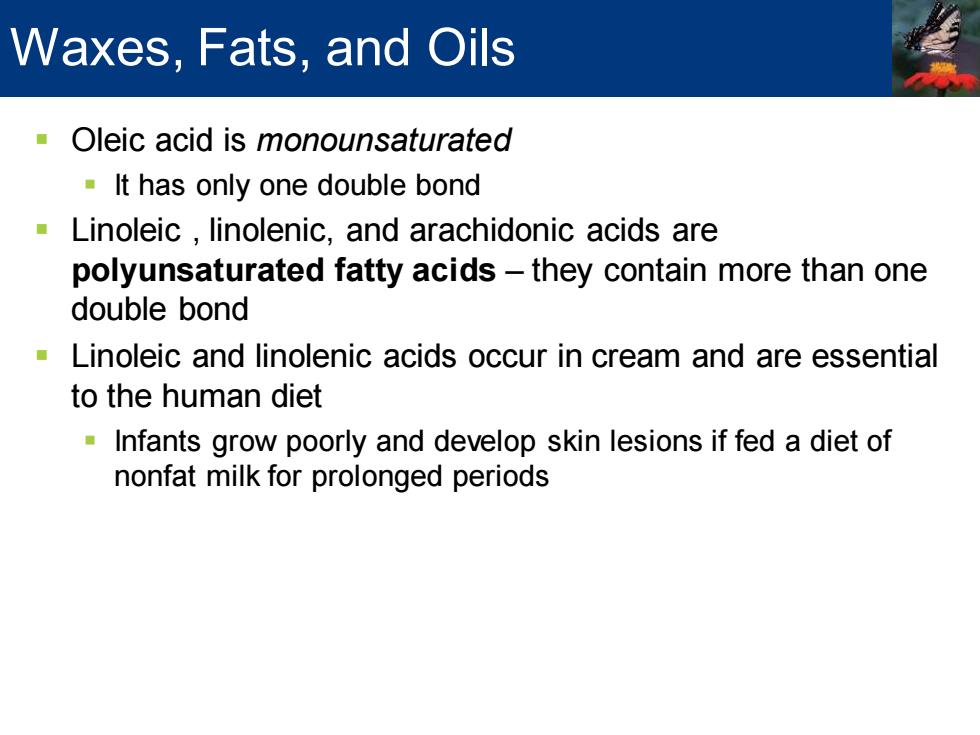
Waxes,Fats,and Oils Oleic acid is monounsaturated It has only one double bond Linoleic,linolenic,and arachidonic acids are polyunsaturated fatty acids-they contain more than one double bond Linoleic and linolenic acids occur in cream and are essential to the human diet Infants grow poorly and develop skin lesions if fed a diet of nonfat milk for prolonged periods
▪ Oleic acid is monounsaturated ▪ It has only one double bond ▪ Linoleic , linolenic, and arachidonic acids are polyunsaturated fatty acids – they contain more than one double bond ▪ Linoleic and linolenic acids occur in cream and are essential to the human diet ▪ Infants grow poorly and develop skin lesions if fed a diet of nonfat milk for prolonged periods Waxes, Fats, and Oils
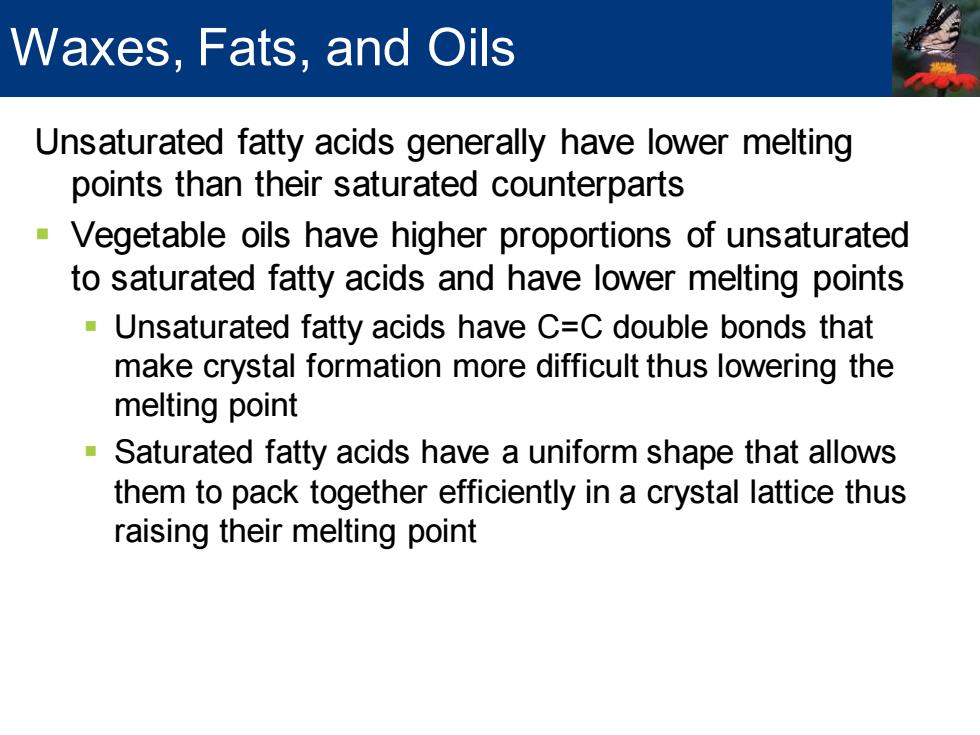
Waxes,Fats,and Oils Unsaturated fatty acids generally have lower melting points than their saturated counterparts Vegetable oils have higher proportions of unsaturated to saturated fatty acids and have lower melting points Unsaturated fatty acids have C=C double bonds that make crystal formation more difficult thus lowering the melting point Saturated fatty acids have a uniform shape that allows them to pack together efficiently in a crystal lattice thus raising their melting point
Unsaturated fatty acids generally have lower melting points than their saturated counterparts ▪ Vegetable oils have higher proportions of unsaturated to saturated fatty acids and have lower melting points ▪ Unsaturated fatty acids have C=C double bonds that make crystal formation more difficult thus lowering the melting point ▪ Saturated fatty acids have a uniform shape that allows them to pack together efficiently in a crystal lattice thus raising their melting point Waxes, Fats, and Oils
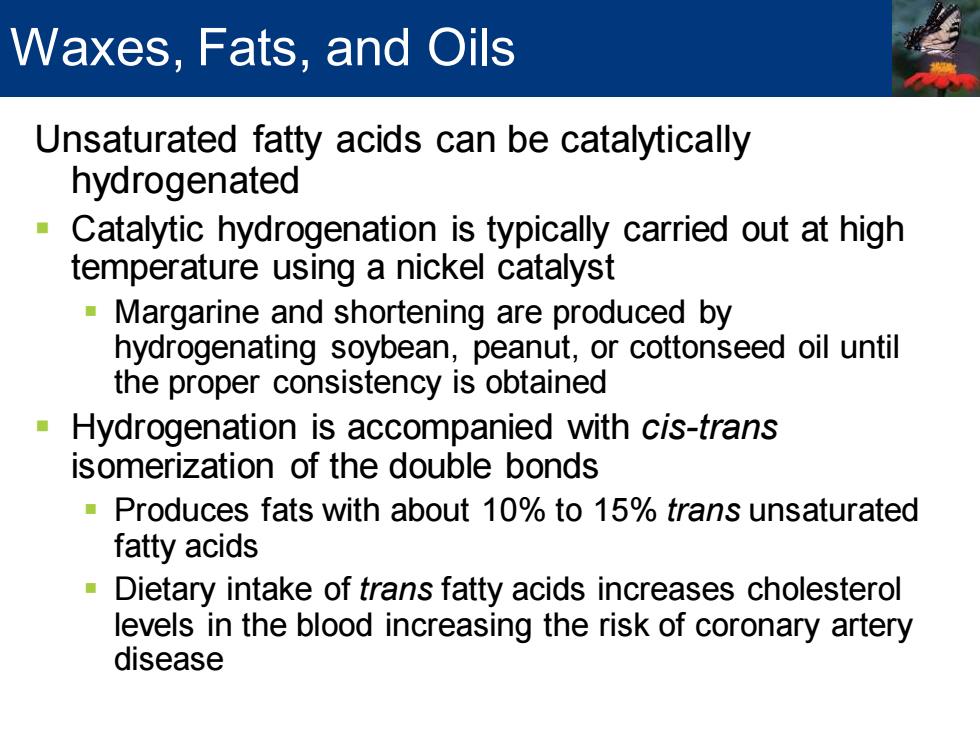
Waxes,Fats,and Oils Unsaturated fatty acids can be catalytically hydrogenated Catalytic hydrogenation is typically carried out at high temperature using a nickel catalyst Margarine and shortening are produced by hydrogenating soybean,peanut,or cottonseed oil until the proper consistency is obtained Hydrogenation is accompanied with cis-trans isomerization of the double bonds Produces fats with about 10%to 15%trans unsaturated fatty acids Dietary intake of trans fatty acids increases cholesterol levels in the blood increasing the risk of coronary artery disease
Unsaturated fatty acids can be catalytically hydrogenated ▪ Catalytic hydrogenation is typically carried out at high temperature using a nickel catalyst ▪ Margarine and shortening are produced by hydrogenating soybean, peanut, or cottonseed oil until the proper consistency is obtained ▪ Hydrogenation is accompanied with cis-trans isomerization of the double bonds ▪ Produces fats with about 10% to 15% trans unsaturated fatty acids ▪ Dietary intake of trans fatty acids increases cholesterol levels in the blood increasing the risk of coronary artery disease Waxes, Fats, and Oils
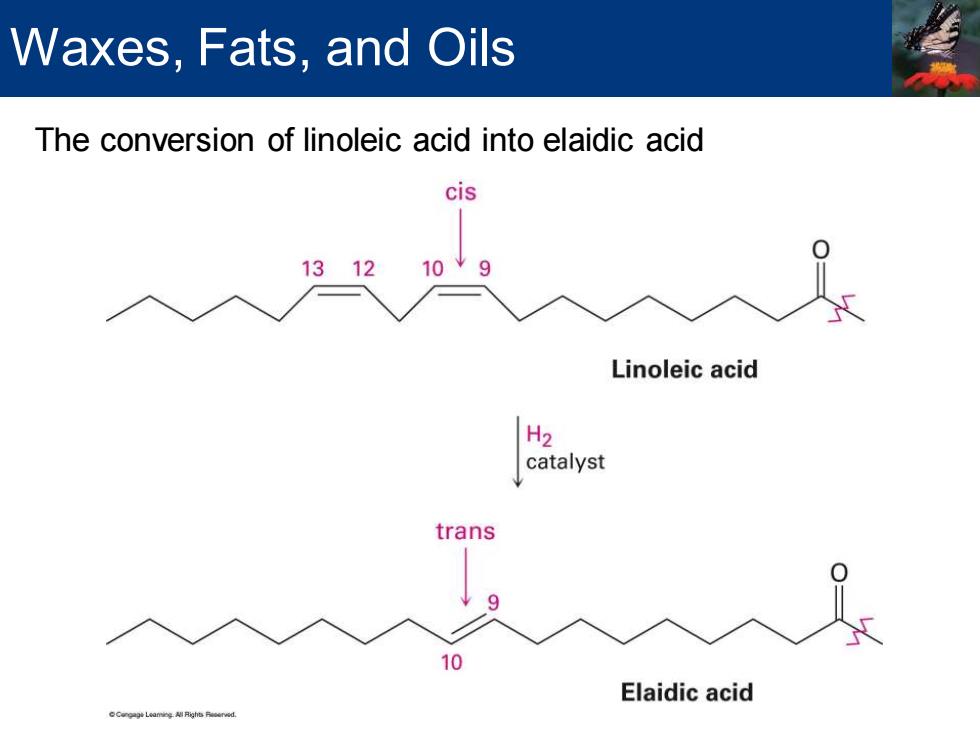
Waxes,Fats,and Oils The conversion of linoleic acid into elaidic acid cis 1312 10 ¥9 Linoleic acid H2 catalyst trans 9 10 Elaidic acid eCg9 Leamip超d
The conversion of linoleic acid into elaidic acid Waxes, Fats, and Oils
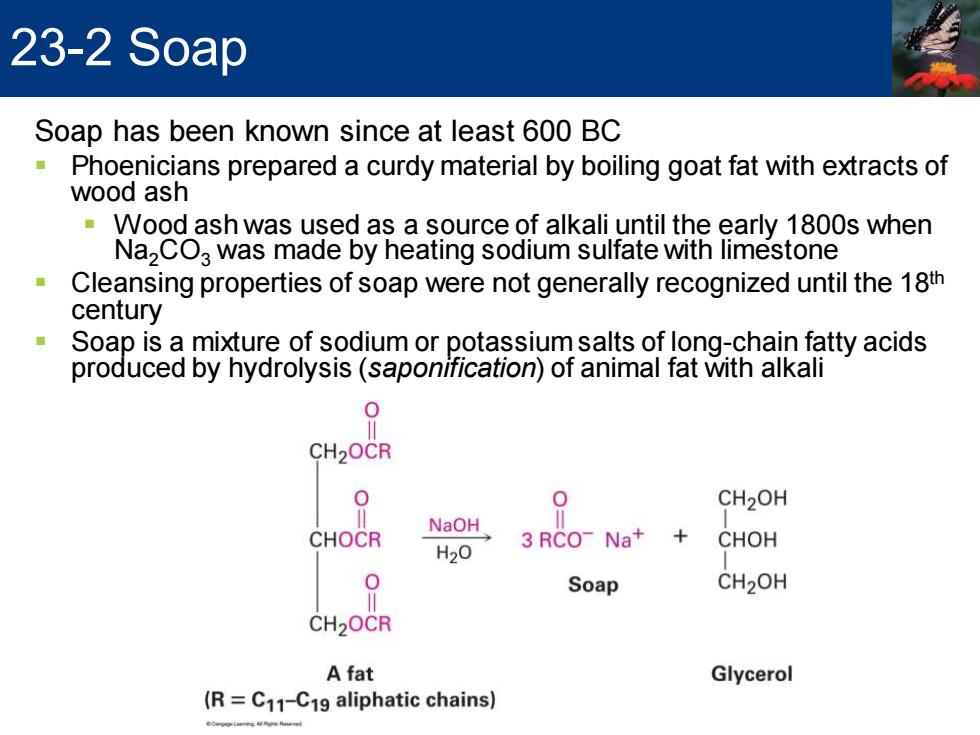
23-2 Soap Soap has been known since at least 600 BC Phoenicians prepared a curdy material by boiling goat fat with extracts of wood ash Wood ash was used as a source of alkali until the early 1800s when Na2CO3 was made by heating sodium sulfate with limestone Cleansing properties of soap were not generally recognized until the 18th century Soap is a mixture of sodium or potassium salts of long-chain fatty acids produced by hydrolysis(saponification)of animal fat with alkali 0 CH2OCR 0 0 CH2OH NaOH CHOCR 3RCO-Na+ CHOH H20 0 Soap CH2OH CH2OCR A fat Glycerol (R=C11-C19 aliphatic chains)
Soap has been known since at least 600 BC ▪ Phoenicians prepared a curdy material by boiling goat fat with extracts of wood ash ▪ Wood ash was used as a source of alkali until the early 1800s when Na2CO3 was made by heating sodium sulfate with limestone ▪ Cleansing properties of soap were not generally recognized until the 18th century ▪ Soap is a mixture of sodium or potassium salts of long-chain fatty acids produced by hydrolysis (saponification) of animal fat with alkali 23-2 Soap